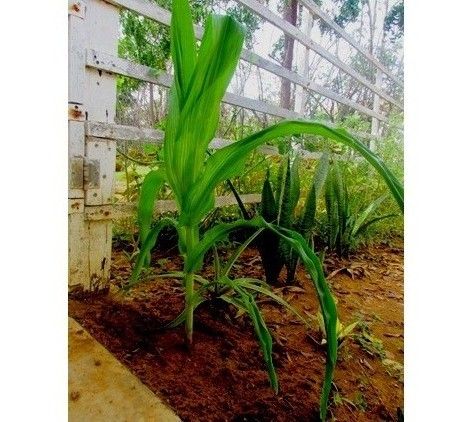RE: Getting The Garden Ready. What Are You Doing In Your Garden?
Cheers and kudos to you. Working on that soil will bring a lot of happiness to you (flowers and food too!), I'll try to post about my experience in gardening as well. I live in an arid zone near the equator, in South America, Venezuela. I'm also very into science and I try to mix it up with my experience growing both food and flowers (If you want check this one and this one too!) One of the first things I found is that even though this kind of soil looks like it's missing nutrients, it's an easy thing to fix, and the real problem is the density of the soil composition. If you keep it moist it will look better, but many roots will find it hard to reach new places nor the bottom of the soil because it lacks both oxygen and nitrogen. If you're thinking about what kind of food you should grow first, I would suggest squash, beans and corn. They grow well together, and just with a couple lines (It doesn't need to be the entire field) you can start to check out how it develops at short term. I also grow lettuce, guava, papaya and lemon trees. Mango and coconuts trees could be a long term choice if you aim to several years of improving your garden, I found a way to also help the growth on the trees and their leaves to a bigger size and I can later explain to you how.

2 month old pop corn plant
The second tip I can give you is that many roots also help to change the soil's composition. Beans for example, have the power to build nitrogen into your soil, and the theory that I'm currently developing involves knowing which type of root can help to make a better soil. I succeeded to turn my light brown soil into a reddish dark brown by only using plants and grass to keep the humidity for longer, and improve not only the composition, but its density as well , because I learnt that you don't only need compost (we can use almost every food scrap from the kitchen and lower our trash outcome, for the better, and make not only compost, but humus), you can use dry leaves and branches (dry matter, grass clips are a tree's superfood), compost or humus (fresh matter) and your original soil to build a lasagna layer style of gardening onto your desired area to try (A technique known as permaculture).

Lettuce germination directly into the soil
I want to thank you because maybe to grow food or start a garden isn't something that someone forces you to do. It's something that you decided and wanted to, and it's not just about the food itself. Many of us learn at a very short age that trees produce the oxygen we breathe, and they also clean out the air pollution while doing so. My third discovery growing plants was that only one papaya tree can make up to 220 pounds of O2 per year. So, imagine if one has let's say, 10.000 plants (that's my case, althought there are small plants and I have many different species), you could be making millions of liters (or pounds) of oxygen, sending them to the air and absolutely nobody is tracking this. So, part of my own research involves how that lack of control in both ammounts of oxygen and pollution is related to storms, tornados and any natural disaster you can imagine, but the most important part being that we cannot entirely control, but we can help indeed and manage how we see and treat not only the soil for the better, but the skies, rains and winds up to a new point of view. One where we can bring more purpose to the forces that we're not currently getting the best part of them (pure raw energy). I hope this has helped you at least a little, and I would like to keep sharing my thoughts and research, and specially to keep meeting and seeing people like you and me. We can be heroes! Thank you again for your work.